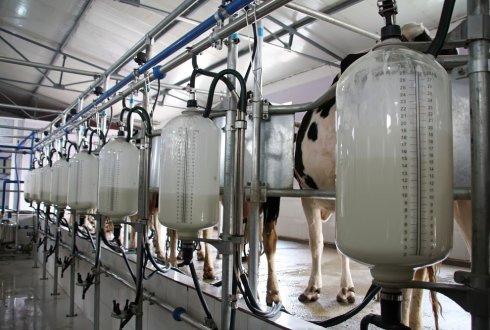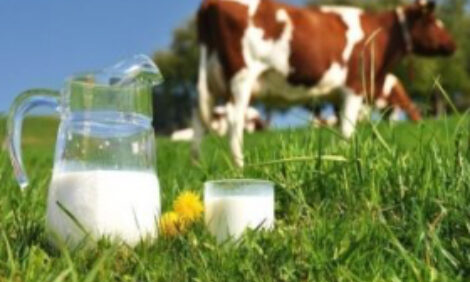



New methods to predict methane emissions of dairy cattle
Methane emissions of dairy cattle can be predicted using both milk fatty acids and milk infrared spectra. This has been demonstrated by researchers at Wageningen University & Research and Qlip under the auspices of the TiFN project Reduced Methane Emission by Dairy Cows.Methane emissions of dairy cows can be predicted with greater accuracy by milk fatty acids compared with milk infrared spectra. However, milk infrared spectra have a greater potential for practical high throughput application.
Methane is produced in the gastrointestinal tract of ruminants when feed is fermented. This methane is the largest source of greenhouse gases in dairy farming. The agricultural sector and the Dutch government have reached agreement on cutting greenhouse gas emissions by 30% by 2020, compared with 1990. The EU’s aim is to reduce greenhouse gas emissions by 80% by 2050. However, the quantity of methane produced by dairy cattle is difficult to measure in practice. For this reason, researchers looked for an indicator for methane emissions that can be measured in the milk of dairy cattle.
Milk fatty acids and infrared spectra
Two techniques were investigated in the study, viz. milk fatty acids and milk infrared spectra. Milk fatty acids are unsuitable for large-scale routine analyses, whereas the milk infrared spectra are already used routinely by milk recording organizations to determine the fat, protein and lactose content of milk. In order to determine whether milk characteristics are related to methane emissions, the methane emissions from 218 lactating Holstein-Friesian dairy cows were measured in climate-controlled respiration chambers and milk samples were collected. The dairy cows received 30 different rations representative of dairy farming in the Netherlands, varying in roughage composition (e.g. fresh grass, grass silage, maize silage) and quality (e.g. harvest time and fertilization level).
Milk fatty acids more accurate, but milk infrared spectra easier to use
The results indicate that methane emissions of dairy cattle can be measured significantly more accurate when using milk fatty acids compared with using milk infrared spectra. In this regard, it became clear that milk fatty acids evaluate the effect of forage type, level, and quality on methane emissions of dairy cattle better than milk infrared spectra. However, infrared spectra are relatively easy and inexpensive to use in practice. Hence, repeated measurements from the same dairy cow are possible, which may result in a better prediction of the methane emissions. If this technique is developed further, milk infrared spectra may possibly be a valuable indicator for methane emissions of dairy cattle.


